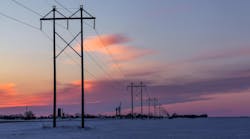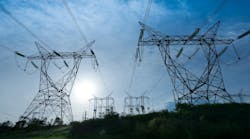Siemens has presented the world's first gas-insulated switchgear for direct-current systems. Such systems are part of low-loss high-voltage direct-current transmission facilities (HVDCT). Direct-current systems previously used air-insulated technology. But because air is a poor insulator, the current-conducting elements have to be placed at a great distance from one another and from the earth potential in order to prevent voltage flashovers. Much space is saved with gas-insulated systems such as those that have been used for three-phase-alternating-current systems for decades. However, engineers were previously unable to build such systems for direct-current technology, because the requirements are far more challenging.
Direct-current lines generate a stable electric field that influences its surroundings over time, causing gas and insulated surfaces to slowly become charged. The charge carriers move along the electric lines of force and change the electric field. Experts at Siemens solved this problem by creating specially designed insulators for the interior of the switchgear. The material they use is paper impregnated with epoxy resin (RIP). This technique is already widely used for other applications such as power transformers. With the help of simulations, engineers developed a suitable geometry for these insulators so that the technology could also be used for direct-current switchgear.
An important technology for the transition of the energy system
Siemens has now developed a gas-insulated compact switchgear for 320 kV that takes up 95 percent less space than a comparable air-insulated system. This especially benefits HVDCT converter platforms for offshore wind farms.
HVDCT technology makes low-loss power transmission possible over long distances and through submarine cables. For this reason and because it can be easily controlled, HVDCT is a key technology for Germany's energy transition. It will be used to connect offshore wind farms to the grid, to transmit wind-generated electricity with low loss from the coast to southern Germany, and to stabilize the transmission networks.
At the beginning of a direct-current transmission, an HVDCT converter station converts the electricity from a three-phase alternating current network or from the collected electricity produced by an offshore wind farm's wind turbines into direct current. This direct current is then converted back into three-phase alternating current at the end of the transmission line. In addition to containing converters using power electronics, converter stations are equipped with transformers and three-phase-alternating-current and direct-current switchgear.
Air-insulated direct-current systems such as those used today at offshore converter platforms take up about 4,000 cubic meters of space. By contrast, the gas-insulated 320- kV compact switchgear only needs 200 cubic meters. As a result, collection platforms can be made up to ten percent smaller; this is a major cost factor at sea.


